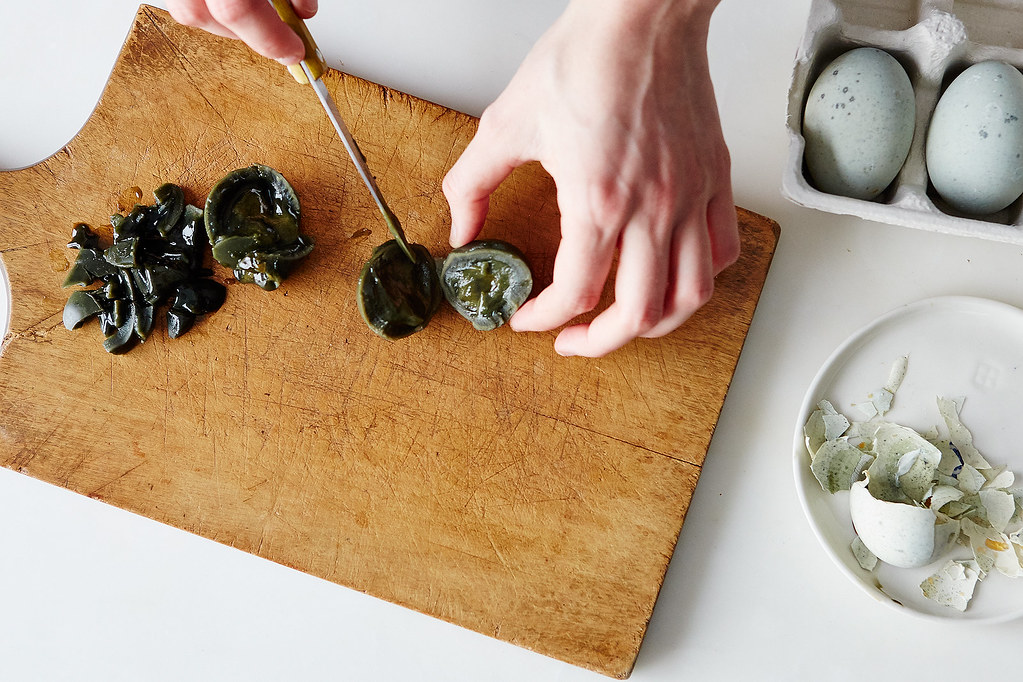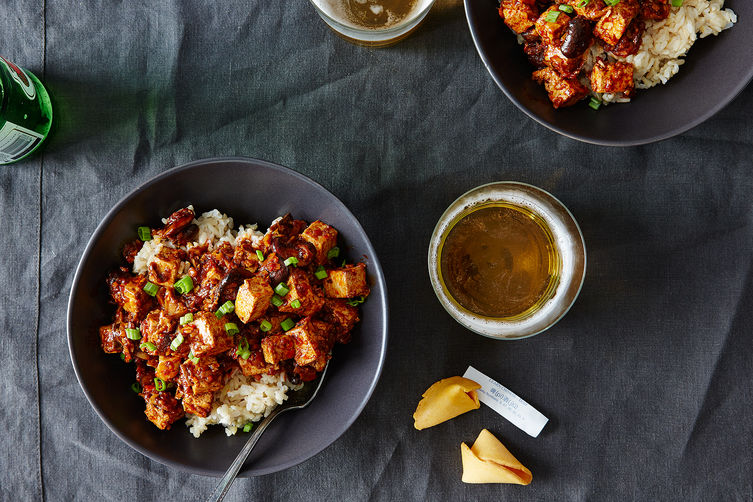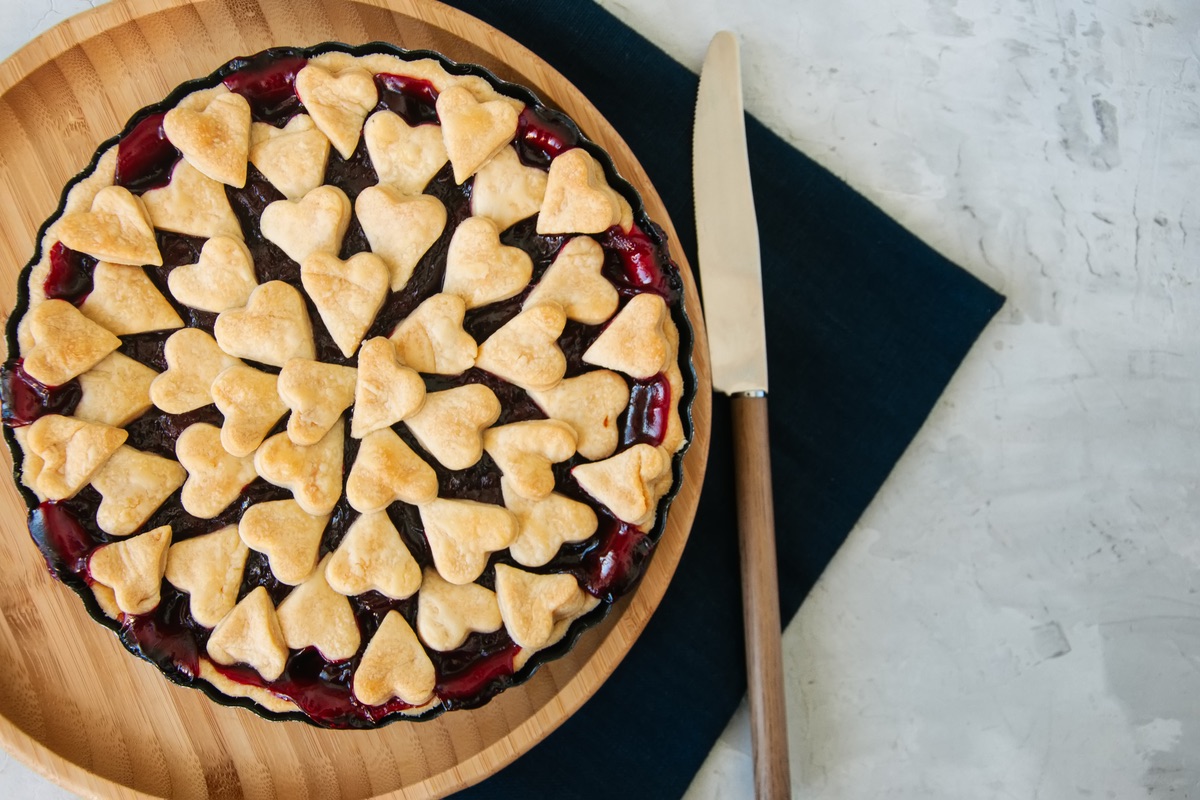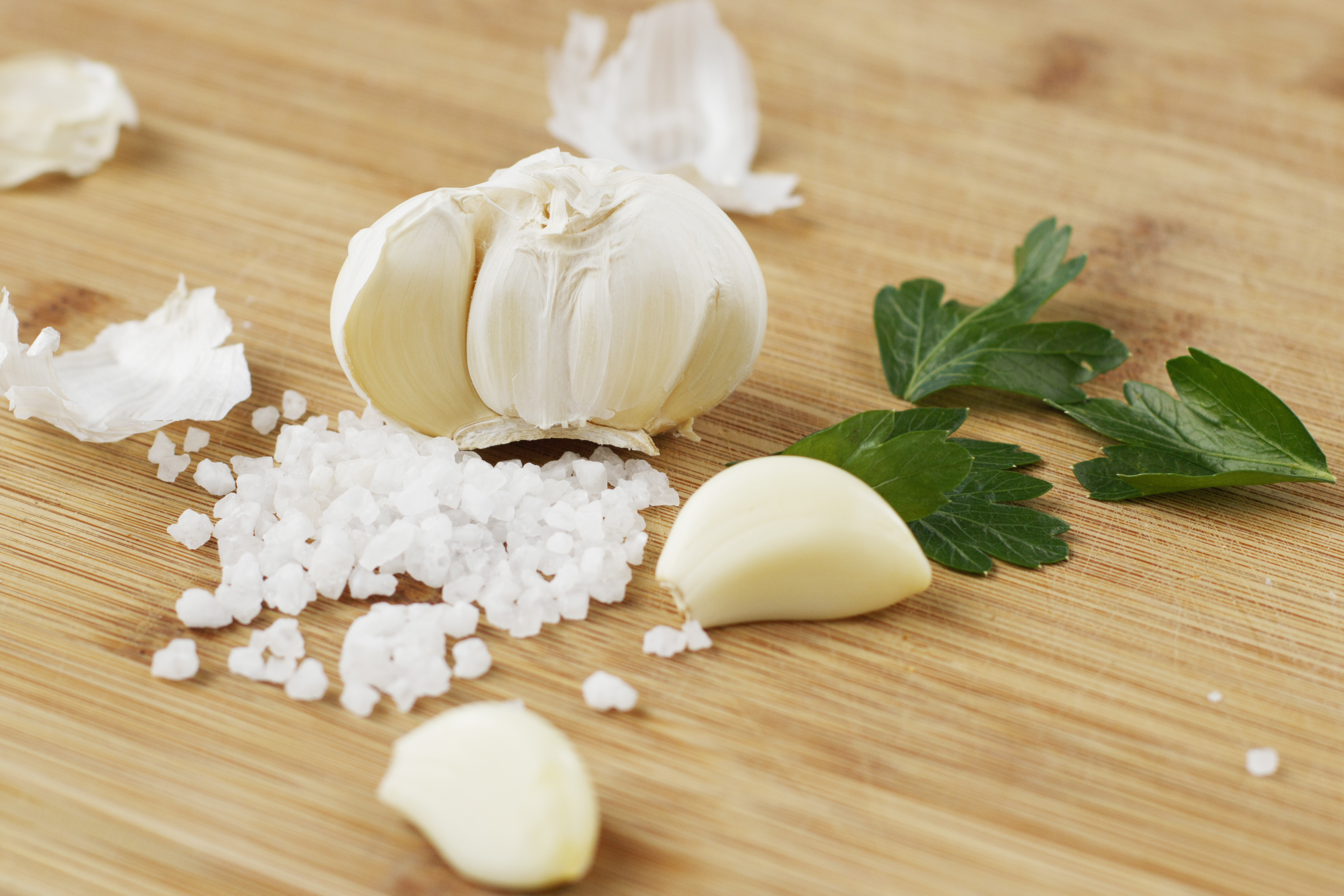First thing's first: What exactly is it?
The pídàn (pronounced peeh? daen!) is a preserved egg that goes by century egg, hundred-year, or thousand-year egg in English—it's very loved in Chinese cuisine. It's a chicken or duck (or sometimes quail) egg that has been preserved in a mixture of quicklime, salt, and ash, then coated in rice chaff. Over the course of three months, the eggs absorb sodium, which denaturizes the proteins within. In non-scientific language, that means the formerly clear whites turn solid and become an opaque brown-black. That's right: It doesn't take a thousand years or even one hundred to preserve the eggs—it only takes a few months. (What we then want to know is what the story behind their English names is; if you know, we'd love to hear in the comments!)
The moment you crack a century egg open, it's not hard to see why the uninitiated might get a little queasy. The smell, pungent and sulfurous, is not one for the timorous eater. Slice it open and find grey-green, sometimes slightly gloopy yolks. Yet there's a strange beauty to the eggs, with the striking patterns of salt crystals sprawled across clear black jelly. The taste and texture is like nothing you've eaten before; an elastic gelatin texture to the whites contrasts with the rich custard cream of the yolk, and it's all enveloped by a slightly sharp funk.

Find it:
You can find these, often in packs of four or six, in most Asian supermarkets or specialty stores. Since they've been preserved—usually in some mixture of lime and salt—they'll probably be sitting around on a shelf, unrefrigerated. They may also go by song hua dan, or pine flower egg, named after the salt patterns. (Isn't that lovely?) The eggs will keep for several months in the pantry, and hypothetically indefinitely if refrigerated.
How to eat it:
Dress it up: A common way to enjoy the egg is with a simple egg and tofu salad. Chop it up and add it on top of or mixed into a bowl of cold silken tofu, stirred together with a dressing of soy sauce, aged rice vinegar, sesame oil, and minced garlic. Shred some vegetables, if that's what you're feeling like. Finish the dish off with a sprinkle of chopped chives and cilantro. The egg holds its own among the other strong flavors, and the chewy pídàn plays well with the melting softness of the tofu. If you're feeling more comfortable with the flavor, skip the tofu and enjoy quarters of the egg simply mixed with the same dressing.
Heat it up: Diced, the century egg adds a little extra chew to slightly spicy vegetarian ma po tofu. The spiciness distracts from the strong flavor, allowing you to fully enjoy the creaminess of the yolk and the unique give of the whites. Century egg meshes well with pork as well, so try tossing small tidbits into a braised pork and rice dish.
Top your congee: For a simple way to enjoy century eggs without too many distracting flavors, top a bowl of soothing congee with wedges of egg, drizzled with fragrant sesame oil or perhaps a few tufts of pork floss (fluffy, slightly sweet dried pork). Another easy dish, and a breakfast favorite, is century egg and pork congee. The broth takes the edge off of the egg for a mellow, hearty meal.
This article was written by Jenny Xu from Food52 and was legally licensed through the NewsCred publisher network. Please direct all licensing questions to legal@newscred.com.










